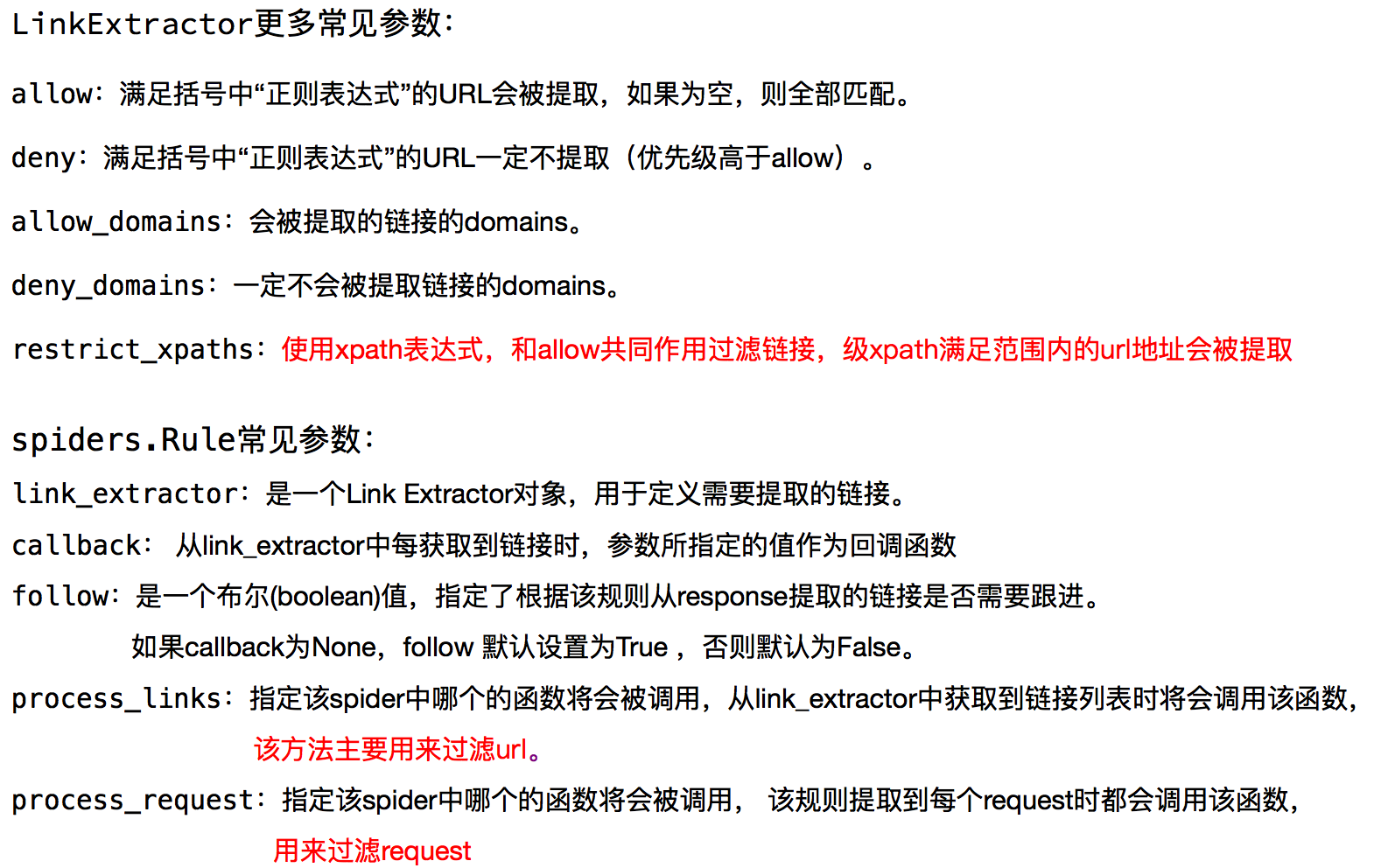
*****
之前的代碼中,我們有很大一部分時間在尋找下一頁的URL地址或者內容的URL地址上面,這個過程能更簡單一些嗎?
思路:
1.從response中提取所有的a標簽對應的URL地址
2.自動的構造自己resquests請求,發送給引擎
URL地址:`http://www.circ.gov.cn/web/site0/tab5240`
目標:通過爬蟲了解crawlspider的使用
生成crawlspider的命令:`scrapy genspider -t crawl cf cbrc.gov.cn`
```
# -*- coding: utf-8 -*-
import scrapy
from scrapy.linkextractors import LinkExtractor
from scrapy.spiders import CrawlSpider, Rule
class YgSpider(CrawlSpider):
name = 'yg'
allowed_domains = ['sun0769.com']
start_urls = ['http://wz.sun0769.com/index.php/question/questionType?type=4&page=0']
rules = (
# LinkExtractor 連接提取器,提取URL地址
# callback 提取出來的URL地址的response會交給callback處理
# follow 當前URL地址的響應是夠重新來rules來提取URL地址
Rule(LinkExtractor(allow=r'wz.sun0769.com/html/question/201811/\d+\.shtml'), callback='parse_item'),
Rule(LinkExtractor(allow=r'http:\/\/wz.sun0769.com/index.php/question/questionType\?type=4&page=\d+'), follow=True),
)
def parse_item(self, response):
item = {}
item['content'] = response.xpath('//div[@class="c1 text14_2"]//text()').extract()
print(item)
```
**注意點**
1.用命令創建一個crawlspider的模板:scrapy genspider -t crawl <爬蟲名字> <all_domain>,也可以手動創建
2.CrawlSpider中不能再有以parse為名字的數據提取方法,這個方法被CrawlSpider用來實現基礎URL提取等功能
3.一個Rule對象接受很多參數,首先第一個是包含URL規則的LinkExtractor對象,常用的還有callback和follow
- callback:連接提取器提取出來的URL地址對應的響應交給他處理
- follow:連接提取器提取出來的URL地址對應的響應是否繼續被rules來過濾
4.不指定callback函數的請求下,如果follow為True,滿足該rule的URL還會繼續被請求
5.如果多個Rule都滿足某一個URL,會從rules中選擇第一個滿足的進行操作
## CrawlSpider補充(了解)

